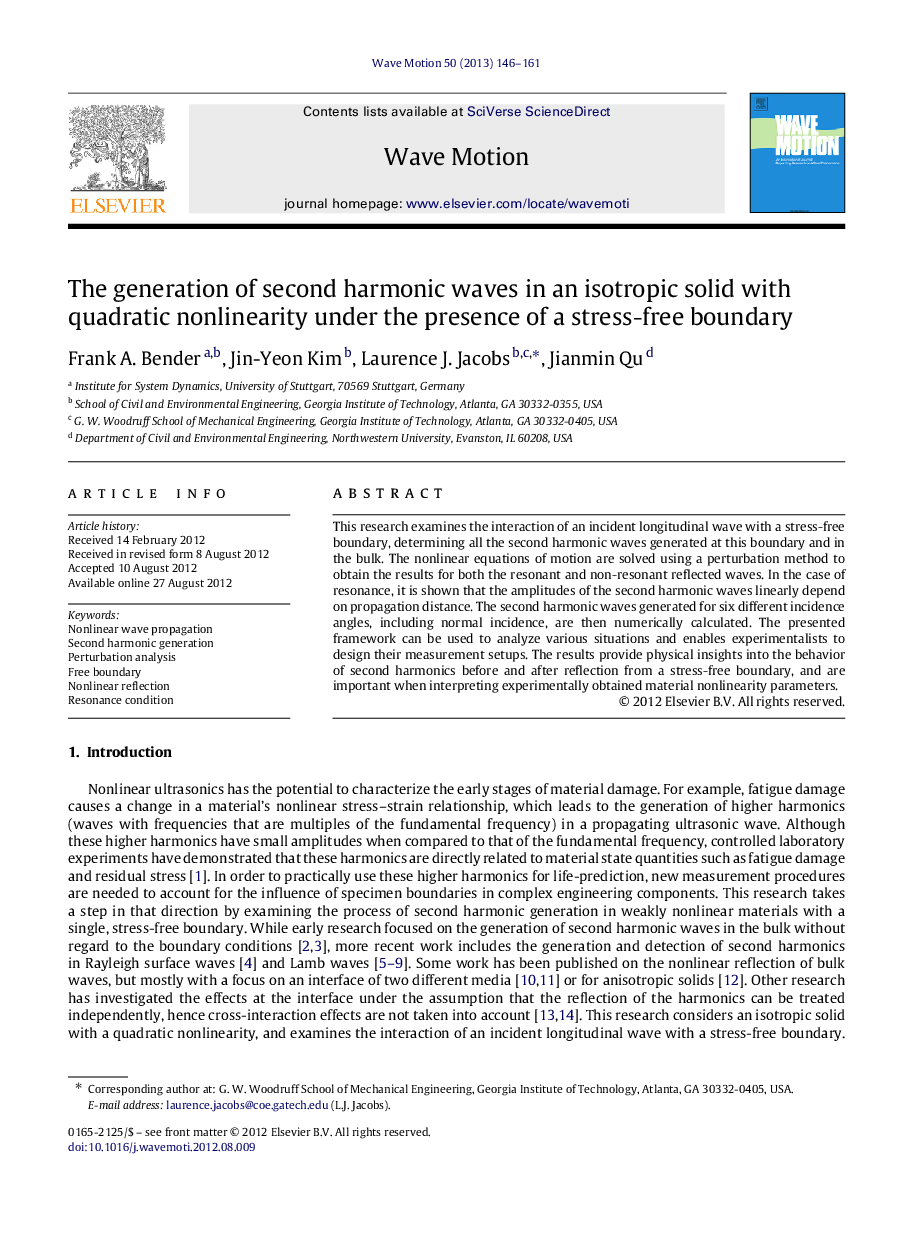| Article ID | Journal | Published Year | Pages | File Type |
|---|---|---|---|---|
| 1900669 | Wave Motion | 2013 | 16 Pages |
This research examines the interaction of an incident longitudinal wave with a stress-free boundary, determining all the second harmonic waves generated at this boundary and in the bulk. The nonlinear equations of motion are solved using a perturbation method to obtain the results for both the resonant and non-resonant reflected waves. In the case of resonance, it is shown that the amplitudes of the second harmonic waves linearly depend on propagation distance. The second harmonic waves generated for six different incidence angles, including normal incidence, are then numerically calculated. The presented framework can be used to analyze various situations and enables experimentalists to design their measurement setups. The results provide physical insights into the behavior of second harmonics before and after reflection from a stress-free boundary, and are important when interpreting experimentally obtained material nonlinearity parameters.
► We provide an intuitive framework for the analysis of second harmonic wave generation in elastic solids. ► We analyze the generation of second harmonics for an incident longitudinal wave and a stress-free boundary. ► The behavior of selected second harmonic waves strongly depends on the angle of incidence. ► Normal incidence of a longitudinal wave is not useful for second harmonic measurements.
